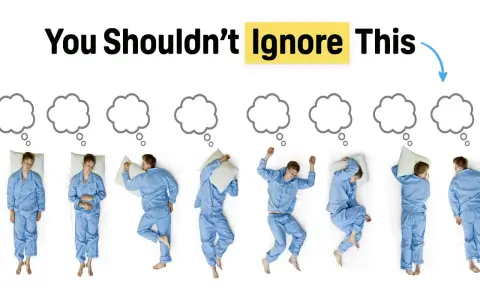Man, let me tell you something. I have never been one for soft-talk or meditating my problems away. I deal with stuff head-on. But a few months back, my head started dealing with me head-on, and it was brutal. It wasn’t just having bad dreams; it was the sickening loop that followed.
I was in this high-pressure sales gig, trying to close the biggest deal of my life. My stomach was constantly churning, I was downing coffee like it was water, and sleep? Sleep became a war zone. I’d wake up at 4 AM absolutely drenched, heart hammering, because my brain had just subjected me to some surreal, apocalyptic garbage.
The real killer, the actual nightmare, was the hour after waking. I’d grab my phone, jump on those cheesy dream interpretation sites, and try to decode what specific catastrophe my subconscious was predicting for my future. Was the crumbling house my failing career? Was the relentless pursuer my impending termination? I was taking vague, noisy brain signals and turning them into immediate, terrifying reality checks. It broke my spirit and guaranteed I wouldn’t sleep well for the rest of the week.

I realized I wasn’t suffering from nightmares; I was suffering from the anxiety I created interpreting them. That’s when I snapped. I threw the phone across the room and decided I was going to try to manually rewire my brain. I committed two weeks to four psychological methods I dug up, ignoring all the jargon, and just focusing on the mechanics. Here’s exactly what I did, step by step, focusing on execution, not theory.
Stopping the Fear Loop: My Execution Plan
I started with the easiest thing to implement when I was already panicked, because panic means complex instructions go straight out the window.
Method 1: Reality-Testing the Wake-Up Zone
The goal here was simple: Immediately anchor myself to the real world and stop the dream-residue from lingering. I picked two physical checks.
- I slapped my bedside table. Hard. I needed the sharp, real sensation.
- I looked at my hands. I’d count my fingers—not just look, but feel the skin, see the pores. Dreams are slippery, but real life is tactile.
I didn’t try to go back to sleep yet. I forced myself to sit up for two minutes and declare, out loud, “That was the dream. This is now.” I practiced this whenever I woke up, whether it was a nightmare or not. After just three nights of implementing this immediate physical check, I cut the waking panic from 30 minutes of racing thoughts down to maybe 10. It separated the dream world from the waking world effectively.
Method 2: Imagery Rehearsal—The Rewrite
This felt utterly ridiculous at first, but it became crucial for undermining the dream’s power. I stopped treating the bad dream as a prophecy and started treating it as a rough draft I could edit.
The moment I woke up, if I could remember the scary scene, I grabbed a cheap notepad and wrote down the terrifying climax. Then, immediately below it, I rewrote the scene with a completely stupid, non-frightening resolution. If a shadow figure was chasing me, in the rewrite, I’d turn around, give him a high-five, and invite him for pizza. If I was trapped, I’d sprout wings and fly to the nearest bakery.
I read the new, ridiculous version out loud three times. It sounds childish, but the mental act of taking control and replacing the terrifying image with a safe, absurd one completely stripped the original image of its emotional punch. I actively rehearsed the safe ending every night before I climbed into bed. This was the practice that started changing the content of the actual subsequent dreams—they were less intense, less threatening.
Method 3: Cognitive Reframing—The Daytime Switch
This was the hardest one because it involved stopping my constant anxiety about the meaning of the dreams during the day. I had to stop the interpretation nightmare before it started.
- I caught myself anytime I used the word “meaning” or “predicts” regarding a dream.
- I replaced those anxious thoughts with one standard phrase: “This is just my brain processing stress data. It’s noise, not a message.”
I realized that fear loves a mystery. By reframing the dream from a cryptic warning to just “my brain cleaning out the junk files,” I removed the high stakes. It was hard; I had to manually police my internal dialogue maybe fifty times a day for a week. But once I successfully told myself, “It’s just static,” the dreams stopped feeling like a threat to my waking life.
Method 4: Physical Relaxation—The Kill Switch
My body was jacked up with tension before I even lay down. The anxiety was a physical beast. I needed a simple way to tell my nervous system to shut up and sit down.
I found a simple breathing rhythm: 4 seconds inhale, 4 seconds hold, 6 seconds exhale. Before I got into bed, sitting on the edge, I cycled through this 10 times. I wasn’t trying to achieve some meditative state; I was literally just trying to slow down my heart rate and engage my diaphragm. I did this without fail. It became a cue. My body learned that those ten breaths meant the stress time was over and the sleep time had begun. When I woke up mid-panic, I’d immediately sit up and repeat the cycle.
What happened? I broke the loop. By actively applying these four methods—the physical grounding, the narrative control, the cognitive shift, and the physical calming—I essentially stripped the nightmare of its power. The dreams didn’t disappear overnight, but their ability to inflict fear on my waking life vanished. I stopped searching the internet. I stopped treating bad sleep as a sign of failure. I took control back, not by wishing, but by actively practicing these simple, mechanical steps every single night.












